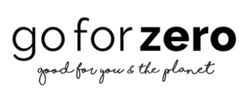Your Cart is Empty
**FREE (PLASTIC-FREE) SHIPPING OVER $75 IN AU | $8.95 FOR AU ORDERS BELOW $75**
Menu
-
- BRANDS
- New
-
A - E
- Activated Eco
- Aleph Beauty
- Archer Eyewear
- Baby Quoddle
- Banksia Pods
- Bare and Boho
- Bear & Kind
- Bearded Chap
- Beauty and the Bees
- Bee Green Wraps
- BioTuff
- Blushing Ivy
- Brightberry
- Buchi Brew Co
- Byron Bay Detox
- Clemence Organics
- Coconut Bowls
- Core Skincare
- Da
- Desert Shadow
- Downunder Wash Co
- Earth Greetings
- Eco Coconut
- Eco Art & Crafts
- Eco Max
- Eco Ocean Hair
- Eco Pen
- Eco Toothbrush
- Ecyo
- Eden Health Foods
- Ethique
- Ever Eco
- E.sup
-
G - N
- Gentle Habits
- Go for Zero
- Goodeau
- Good Change Store
- Good Cuppa
- Green Grip
- Hannahpad
- Here and After
- Hey Zomi
- Ilo Wellness
- IME
- Jack n' Jill
- Jentl
- Jonny
- JuJu Cup
- Kayu & Co
- Kiin Baby
- Kooshoo
- Laminated Cotton Shop
- Left-handesign
- Love and Lee
- Love Beauty Foods
- Magic Earth
- Miod
- Mobeco
- Mt.Retour
- Natural Rubber Soother
- Natural Wonders
- No Nasties
- Noosa Basics
- Notely
- Nuebar
- Nutra Organics
- Nurtur Tea
-
O - S
- One Chew Three
- Paper & Bloom
- Paper Saver
- Patch
- Peggy Sue
- Pleasant State
- Poppy and Daisy Designs
- Raw Bulk Foods
- Raw Medicine
- Raww
- RealChai
- Resparkle
- Retro Kitchen
- RosehipPlus
- Rosie Lou
- Rustic Peppermint
- Salty Aura
- Saver Sleeve
- Scoop Whole Beauty
- SealPod
- Shampoo with a Purpose
- Sileco
- Solid Oral Care
- Sow n Sow
- Strap
- Stray Willow
- Sunbutter
- Sunslayer
- Surfmud
-
T - Z
- That Eco Lifestyle
- That Red House Soapberries
- The Australian Natural Soap Company
- The Fabric Comb
- The Glitter Tribe
- The Keeper
- The Loose Tea Company
- The Naturool Co
- The Physic Garden
- The Swag
- The Tooth Faerie
- This Is Incense
- Togo Sun
- TOMbag
- TOM Organics
- Urban Composter
- Urban Greens
- Urthly Organics
- Veggie Saver
- Viva La Body
- Wanderlightly
- We Might Be Tiny
- Willelaine
- Winki Zinc
- Woohoo
- Wotnot
- Wrappa
- ZeroCare
- SALE
- SKINCARE & MAKE UP
- BATHROOM
- HOME
- FAMILY
- Zero Waste packs & Gifting
- BLOG
- ABOUT US
-
- Login / Subscribe
-
Australia (AUD $)

**FREE (PLASTIC-FREE) SHIPPING OVER $75 IN AU | $8.95 FOR AU ORDERS BELOW $75**

What do the Numbers on Your Products Mean?
May 15, 2019 3 min read
Isn't all plastic the same? Surely you can recycle anything with a recycle symbol on it?
There are seven different types of plastics and unfortunately, it's not always as 'easy' as it seems for some of them. We are all well aware (hopefully) that we should use less plastic, yet the fact that it is embedded in so many everyday items and products can pose a challenge. It is easier than you think to go plastic free, start your journey with a simple reusable item such as a water bottle and go from there. If you can't find an eco-conscious substitute (which is rare), then it's important to know your plastic numbers!
WHAT DOES THE NUMBER ACTUALLY MEAN?
You may have noticed the little numbers inside of the recycling symbol. These guys actually have a purpose. They are called ‘Resin Identification Codes’ (RIC’s). They are used as a guide to know the grade of plastic, how easy it is to recycle, which chemicals are inside, how biodegradable they are, their level of leaching, and for separation processes.
Fun Fact: We thought the symbol meant the amount of times it had 'been recycled' (wow 😅)
You can recycle almost anything, however some plastics require a far bigger effort than others, which can leave a massive footprint on the environment. So we created the guide or 'cheat sheet' below to show the difficulty level behind recycling the different types of plastic. Screenshot it, share it, print it out and stick it on your fridge so you can familiarise yourself with it and make healthier, earth loving decisions.
TYPES OF PLASTIC CHEAT SHEET

IF IT DOESN'T HAVE A SYMBOL, CAN I RECYCLE IT?
This short video is super helpful for knowledge on what items are recyclable and how to optimise their 'recyclability'.
Additional tips:
- Golden rule: Different materials need to be separated. For example a toy with plastic and wooden parts needs to be taken apart before it can go into the recycle or compost bin.
- Remove the lids and rings from bottles. They are a different type of plastic, and it helps to avoid liquid being trapped inside which effects the items weight and sorting process.
- Remove stickers/ labels from bottles.
- Rinse out and clean items to your best ability before placing in the recycle bin to avoid contamination.
- Remove greasy sections of your pizza crate to avoid contamination.
For more information on how to properly recycle plastics and other materials, check out this short and helpful recycling guide.
PLASTIC LEACHING
Plastic Leaching refers to the nasty chemicals inside plastic items transferring onto the food or beverages they touch. Here’s a little cheat sheet that rates each type and their risk of leaching (Keep this in mind if bub likes to play with plastic items in their mouth):
 Source: Baby Green Thumb
Source: Baby Green Thumb
GOING PLASTIC FREE
To avoid the risk of harmful plastic toxins altogether, check out our range of eco-conscious reduce waste & re-usable items. If you are just starting out on your reduce waste and toxin-free journey we recommend starting with a re-usable water bottle, re-usable beeswax wrapsor shampoo bars. Remember it's a journey not a race, try not to overwhelm yourself with too many changes at once.
You've got this! ♡.
If you have any questions, feel free to email us at askusanything@goforzero.com.au
Thank you for making the earth a better place xx
Leave a comment
Comments will be approved before showing up.
Recent Articles
- Five Reasons to Swap Your Coffee for Matcha October 11, 2024
- Discover the Benefits of Shampoo Bars: Your Guide to a Plastic-Free Hair Care Routine October 06, 2024
- Your Ultimate Guide to Natural Sunscreen and Zinc in 2024: Your FAQs Answered September 17, 2024
- The Soap-er Star of Sustainability: Why Bar Soap Beats Liquid Every Time September 15, 2024
- PFAS in Everyday Products: Your Complete Guide to Forever Chemicals September 08, 2024
Subscribe
Sign up to get the latest on sales, new releases and more …
